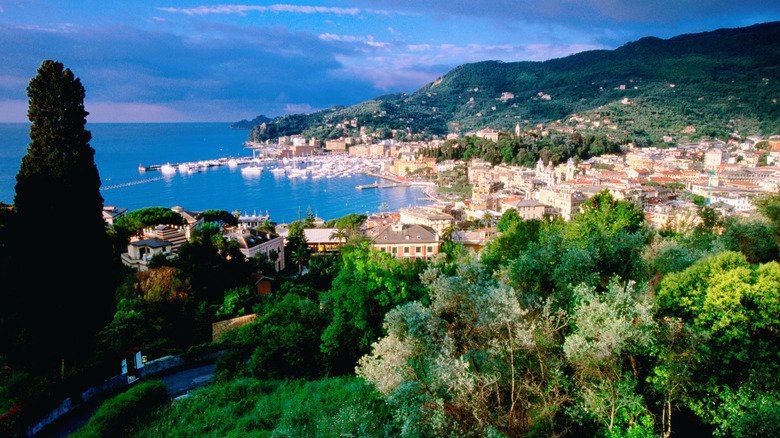The Coastal Paradise In Italy Abundant In Luxury And Serenity All Without The Crowds
The Italian Riviera is one of the most beautiful coastlines around the world worth a visit. It's famous for glitzy towns like Portofino, the playground of the wealthy, and a certain charming set of villages called Cinque Terre. The Riviera stretches along the shoreline of Liguria, a crescent-shaped Italian state, known for its specialty regional cuisine (ahem, pesto), as well as incredible scenic beauty. The Italian Riviera, generally split into the Riviera di Levante and the Riviera di Ponente, is littered with many idyllic coastal towns, from poet-inspiring Portovenere to unpretentious Rapello, as well as bigger cities like Genoa and La Spezia. It's hard to choose which town to base yourself in during a visit to the Riviera (which, let's be real, is not a bad problem to have). Luckily, many of them are connected via ferry, train, trail, or short car ride, which will make your decision easier.
Avoid the crowds at destinations like Portofino and instead head to smaller, lesser-visited villages like Santa Margherita Ligure, or Santa to the locals, on the Riviera di Levante. This little piece of paradise, established in Roman times, first attracted European nobility in the late 17th century, then boomed in the 1950s when it was discovered by international jet setters. Nowadays, Santa Margherita Ligure is where you can find that signature Italian dolce vita: sunny beaches, classic Italian architecture, pastel hues, seaside promenades, fresh seafood, patio restaurants, and boat-filled harbors.
Discover la dolce vita on the Italian Riviera
Santa Margherita Ligure, known as the pearl of Tigullio, is an underrated Italian town for a laid back coastal vacation — except for locals, that is. A well-established resort town, it is welcoming and relaxed, yet retains a similar sheen to its fancier and more famous neighbor, Portofino. The palms of the main promenade lead to Art Deco hotels once favored by icons like Vivien Leigh and Laurence Olivier. The traditional Ligurian gozze, or fishing boats, are interspersed with sparkling sailboats.
With 300 days of sun each year, the beaches are certainly one of the town's highlights. Rent a chair at one of the ritzier beach clubs, like Bagni Fiore, or head to the more chill Bagni Vicini. There are also several free beaches, with fewer amenities, such as Spiaggia Libera. Or, hop on a 40-minute ferry to San Fruttuoso, home to a historic abbey right on the coast. The beach is incredibly picturesque, and offshore lies a sunken statue, "Christ of the Abyss," which can be seen by snorkeling or diving.
Although the weather is reliable and often sunny year-round, most visitors come to Santa Margherita Ligure in the summer, when the water is warmest and the ferries are most frequent. Summer also means higher prices, so if you want to avoid the crowds and save some money, consider visiting in March or September.
What to do, see, and eat in Santa Margherita Ligure
A fishing village turned resort, like many towns on the Italian Riviera, Santa Margherita continues its tradition of freshly caught, truly excellent seafood — especially the red shrimp (the darker the shrimp, the better). Head to the daily fish market on Lungomare Marconi to choose your catch of the day right from the net, and try it alongside Liguria's famous pesto or focaccia. If you visit Santa on a Friday, sample local specialties at the weekly open-air food market on Corso Matteotti.
There's plenty to do and see, besides swimming and eating, like the Villa Durazzo, home to one of the most romantic gardens in Italy, or the 16th-century Castello di Santa Margherita Ligure, still standing guard over the coast. For incredible views, followed by celebrity spotting, take a one-hour hike along the beautiful Italian coast, on the seaside trail between Santa Margherita and Portofino.
You can also take a day trip to the famous Cinque Terre ("five lands" in Italian). It's a set of fishing villages, Riomaggiore, Manarola, Vernazza, Cornigilia, and Monterosso al Mare, carved into the Ligurian cliffs and overlooking the Mediterranean Sea. These perched hamlets, once isolated fishing villages only reachable via boat and footpath, are now connected by train as well. A national park that's part of a UNESCO World Heritage Site and a popular tourist destination, they still retain their traditional charm and are worth a visit.


